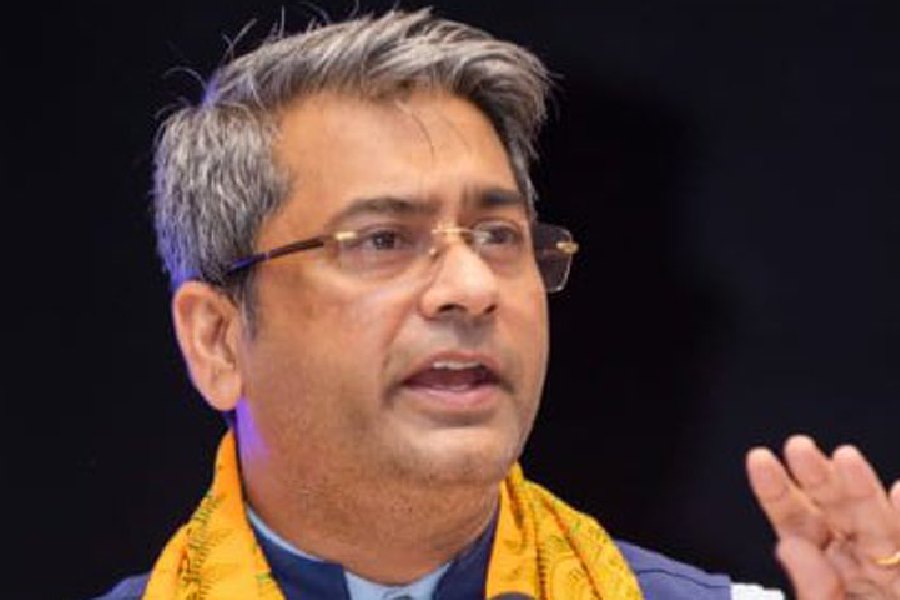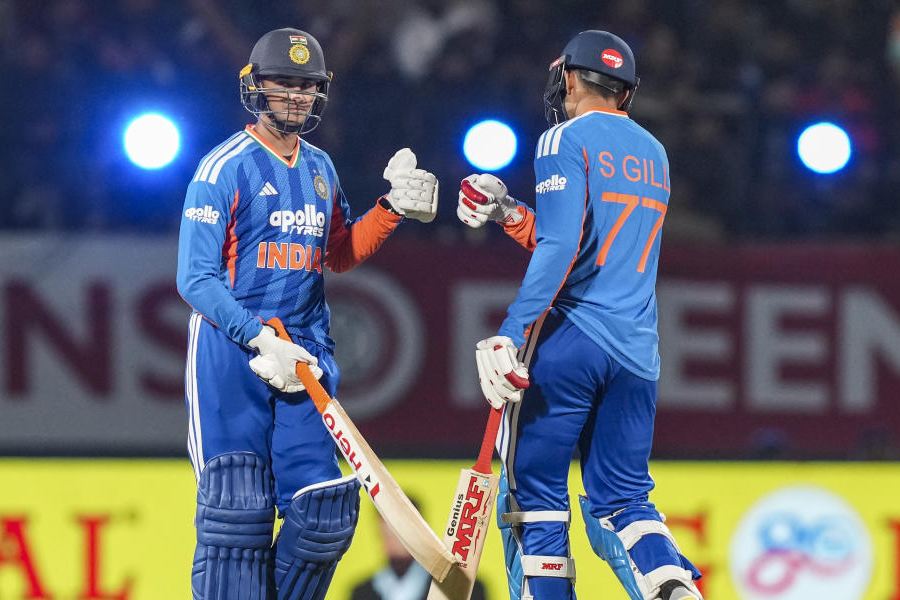 |
Sometimes films are produced for breaking new grounds. Temporary gains are unimportant. When I, Joy Ganguly and a handful travelled to the US with a shoestring budget to make The Bong Connection in 2004, we were simply trying to Crossover. Watching Chander Pahar at INOX (South City) on Friday seemed like a far greater and bigger adventure that I am certain will change the course of Bengali cinema in the next three years.
The most expensive Bengali film till date, based on the Bibhutibhushan (Bandopadhyay) novel, will inspire if not force the Bengali industry to be more dynamic in scale, thought, courage. And the actual returns of this film will be evaluated by the quality and success of films that will follow Chander Pahar in the next three years. Shree Venkatesh Films and Kamaleswar Mukherjee will go down in history for braving the very difficult journey filled with risk but full of confidence.
After a long time a Bengali film made me feel proud, filled me with envy and made me sit up and salute the production. Almost 85 per cent of the film was spellbinding, gorgeous and filled with sheer good taste. The makers pulled off a very popular “kishor” adventure story that is cinematically extremely difficult purely because they, like the hero Shankar, do not play safe.
I did not like Kamaleswar’s first work Uro Chithi, which I was a part of. Then I got swept away with the visual quality of Meghe Dhaka Tara. But with Chander Pahar he enters a different league where confidence and sheer hard work are evident in almost every frame. A more-than-two-hour cinema about almost two men and a jungle becomes ravishingly captivating simply because the two men are gorgeously masculine and the landscape stunning. I only wish editor Rabiranjan Moitra had done away with the frequent slow-mo and ramping, and resorted to just cutting, because they distract you from the pace of the narration.
Gerard Rudolf as Diego Alvarez and Dev as Shankar make a superb combination. The wretchedly wise and the innocently curious. Both thirsty for adventure. Rudolf’s almost Tim Roth-like cold fire adds to the ruthlessness of the tale. While Dev’s almost childlike fearlessness to conquer the unknown heightens the philosophy of the basic text. I was weary of the commercial star till the film started, but through the viewing was convinced that no one else could have played Shankar. Dev brings to Shankar what Daniel Craig (my best Bond) brings to Bond. Both have a certain suburban, boyish charm yet their headstrong brawniness makes their characters edgy, lovable and believable. Like Craig, Dev combines sheer strength with utter vulnerability that works magic. The final hallucination scene where a battered Shankar rambles as he eats burnt vulture is pulled off with brilliant performance. Dev’s entry into serious cinema succeeds superbly because he simply whacks the ball out of the field. Credit goes to Kamaleswar for using Dev’s vulnerability as his strength. His theatrical killing of the strange creature called Bunip (the killing isn’t there in the original text) works superbly because Kamaleswar had prepared us with a similar dream sequence at the start.
There have been many alterations of the original text, but most of them work immensely because the writer and director make it dramatic and believable. Tirumal’s death and melodramatic killing of the lion works wonders simply because of the blood-stained photo of Tirumal’s fiance. Similarly, the accidental entry into the diamond mine works more than in the original, where Shankar consciously goes in to take shelter, because it adds to the deliriousness of Shankar who finds the diamonds but cannot recognise.
Among my favourite sequences is the scene where Shankar goes in search of food and gets intoxicated by an infectious plant as Alvarez waits in anticipation. Extremely good montage of exotic shots. The pots, pans, battered hat, Alvarez dozing, Shankar wandering, the close-up of spiders… That Indraadip Dasgupta does not layer it with music heightens the tension. I only wish he could have shown much more restraint in other sequences where the overriding score detracts from the toil and pain…. There is so much inherent power in the visuals that a lesser elaborate and more haunting, minimalistic score perhaps would have been apt. I personally wanted to hear Alvarez’s harmonica more. The scene where the score actually works is the burial sequence of a mutilated Alvarez (wrapped in his own tent) superbly acted by Dev. The beauty and ruthlessness of nature engulfs you. Debojyoti Mishra’s title music on the other hand grabs you.
But the player who is literally responsible for the victory is our young Freddy Young of Calcutta, Soumik Halder. Here is a film from Bengal where almost 90 per cent of the cinematography is sheer brilliance, reminding me of all the Hollywood adventure cinema of my boyhood. It is like going back in time where cinema was sheer physical joy, a feast of visuals. Each and every long shot, be it from a jimmy (jib), crane or simply low-angle wide, works wonders. Together with the production designer Nmonde Ngema, Soumik works out series of sequences where one does not need to hear anything but just keep watching.
The lion attack sequence at the station, the camping sequences, the climbing, the Victoria falls (with the CG), the unseen entry of Bunip, the crossing of Kalahari, the pre-interval scene where they first witness Chander Pahar, the Shankar eating vulture sequence, right up to the Salisbury market and cafe…the list is endless.
Even much of the special effects done at the same Neon Effects, which has given us very mediocre stuff earlier, is simply outstanding. The post-volcanic eruption sequence where Alvarez and Shankar debate whether to continue their journey, amid an ash storm, is simply magical.
I raise my glass to Kamaleswar for the introduction sequence of Alvarez (which is different from the book). I take my hat off to him for the final return-to-civilisation sequence with the sound of the gunfire, built through an attempted suicide of Shankar. I would like to hug him for the brilliantly written sequence of Maurius, again not in the book, yet superbly acted by Paul Ditchfield. Where Maurius says, “animals do not threaten, it’s the humans who are harmful”, I finally take my bow to Venkatesh Films for making this adventure possible.
To me it looks and feels far bigger than a 15crore project. Far glorious than many bigger budget Hindi adventures I have ever seen. Because as Alvarez says, “It’s better to travel well than to arrive”.
When I read Chander Pahar for the first time I felt very proud to be a Bong. But buddy, Kamaleswar, I felt a greater pride to be part of this Bong industry after watching Chander Pahar. It raises the bar. And though I will never ever attempt something like this but after this I will never be able to take short cuts with period pieces like Bomkesh.
The crux of the review folks is that whether you are a Bong or not, if you live in Bengal, Chander Pahar is a must watch. If you do not you will perhaps miss history. If you wait to watch it on the small screen or DVD, it would be like listening to a live Ravi Shankar on a cheap tape recorder.











